LCD Technology: Working Modes & Display Composition
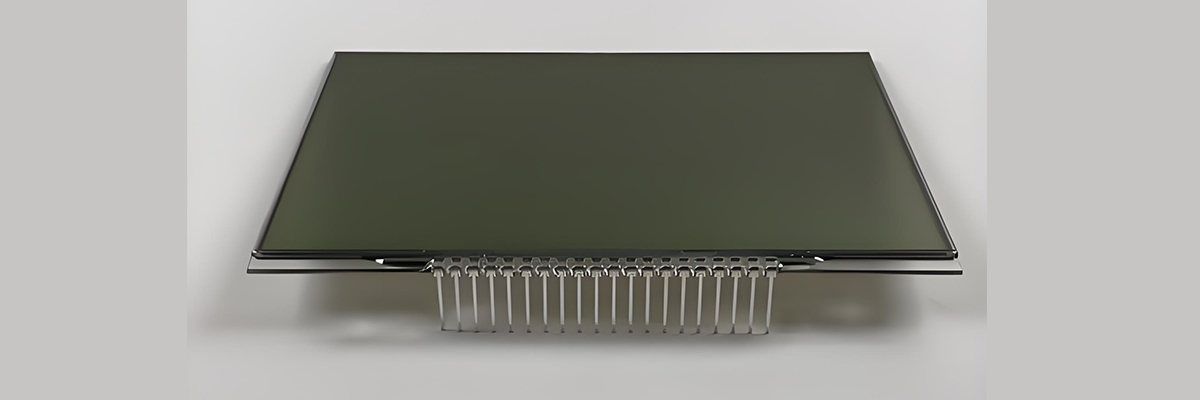
A comprehensive guide to the technologies behind modern
lcd display screen
This detailed overview explores the various working modes and structural components that define liquid crystal display technology, explaining how different lcd display screen technologies function and their respective advantages in various applications.
The fundamental operation of a lcd display screen, including glossy vs matte lcd screen, relies on manipulating light through liquid crystal materials that change their optical properties when exposed to an electric field. These materials do not emit light themselves but instead modulate light from external sources, making them fundamentally different from emissive display technologies like OLEDs.
The optical behavior of liquid crystals is determined by their molecular structure and alignment, which can be controlled through applied voltage. This unique property allows liquid crystals to act as light valves, regulating the passage of light to create images on the lcd display screen.
Key Optical Principles
- Birefringence: Liquid crystals split light into two polarized waves traveling at different speeds
- Polarization: Controlling light waves to oscillate in specific directions
- Twist effect: Molecular rotation altering the path of polarized light
- Electro-optical effect: Changing optical properties through applied electric fields
These optical principles form the foundation of all lcd display screen technologies. By combining these properties with different structural configurations, manufacturers have developed various LCD modes, each with distinct performance characteristics suited to specific applications. The primary classification of LCD technologies is based on their light source utilization: transmissive, reflective, transflective (semi-transmissive), and projective types.
Transmissive LCDs are the most common type of lcd display screen technology, widely used in televisions, lcd computer screen, computer monitors, smartphones, and tablets. These displays rely on a backlight positioned behind the liquid crystal layer to provide illumination, making them highly dependent on this artificial light source for visibility.
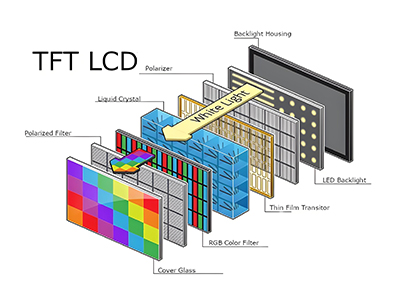
Transmissive Structure
Light passes through the liquid crystal layer from a dedicated backlight, controlled by pixel electrodes.
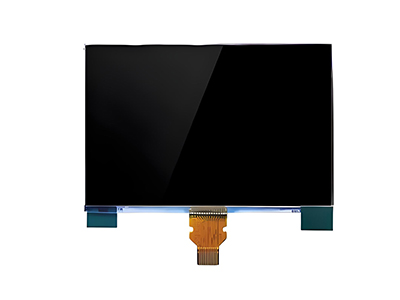
Brightness Advantages
Controllable backlighting allows transmissive displays to maintain visibility in various lighting conditions.
Power Considerations
While backlights consume power, modern designs incorporate energy-efficient LED technology.
2.1 TN Mode (Twisted Nematic)
TN mode was the first commercially successful lcd display screen technology, developed in the 1970s. It remains popular due to its simple structure and low manufacturing cost, making it ideal for applications where cost is a primary consideration and advanced display performance is not critical.
In TN displays, liquid crystal molecules are twisted approximately 90 degrees between two glass substrates with orthogonal polarizers. In their natural state, these molecules rotate polarized light passing through them, allowing it to pass through the second polarizer. When voltage is applied, the molecules align with the electric field, reducing or eliminating the twist and blocking light transmission.
Key Characteristics:
Advantages
- • Low manufacturing cost
- • Fast response times
- • Low power consumption
- • Simple structure
Limitations
- • Narrow viewing angles
- • Limited contrast ratio
- • Poor color reproduction
- • Inverted grayscale at extreme angles
TN technology is commonly found in budget monitors, basic lcd display screen applications, calculators, digital watches, and other devices where advanced visual performance is not required. Its fast response times have also made it popular for early gaming monitors, though it has largely been surpassed by other technologies in this application.
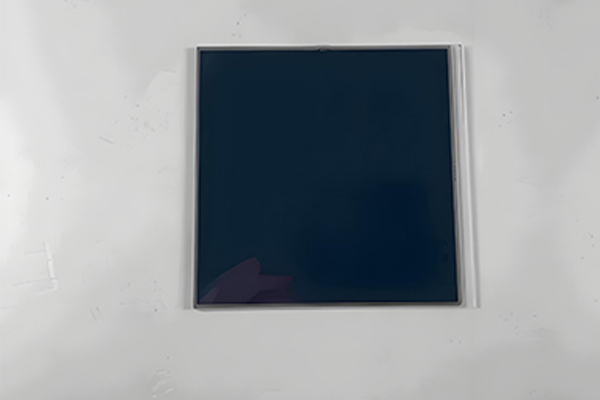
TN mode operation showing liquid crystal alignment with and without electric field
Typical TN Display Performance
2.2 STN Mode (Super Twisted Nematic)
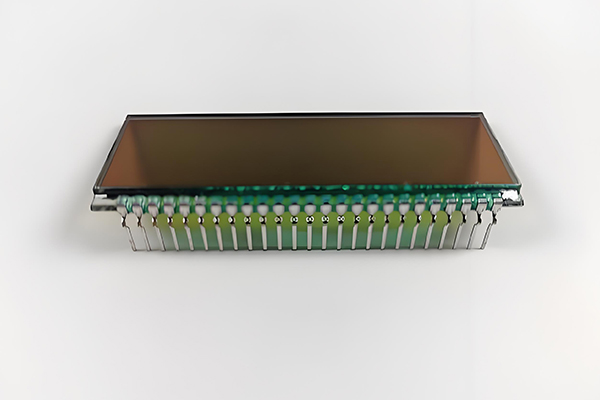
Comparison of molecular alignment in TN vs. STN displays
STN vs TN Viewing Angles
STN mode represents an evolution of TN technology, addressing some of its limitations while maintaining relatively low production costs. As the name suggests, Super Twisted Nematic displays feature a much greater twist angle in their liquid crystal molecules, typically between 180 and 270 degrees, compared to the 90-degree twist in TN displays.
This increased twist creates a more stable molecular structure that allows for better contrast ratios and wider viewing angles than TN technology. The improved stability also enables STN displays to support higher resolution panels, making them more versatile for various lcd display screen applications.
Color STN (CSTN) displays incorporate color filters similar to those used in other color LCD technologies, though early implementations suffered from slow response times and limited color reproduction. Modern CSTN improvements have addressed many of these issues, though they still lag behind other color display technologies.
Applications and Limitations:
STN displays found widespread use in early mobile phones, personal digital assistants (PDAs), and portable gaming devices. Their improved performance over TN made them suitable for these applications before more advanced technologies became cost-effective.
While offering improvements over TN, STN technology still suffers from slower response times compared to newer lcd display screen technologies and limited color accuracy. These limitations have led to its gradual replacement in most consumer electronics, though it remains in use in certain industrial and low-cost applications where its specific characteristics are still valued.
2.3 IPS Mode (In-Plane Switching)
IPS technology represents a significant advancement in lcd display screen design, addressing the viewing angle and color reproduction limitations of earlier TN and STN technologies. Developed by Hitachi in the 1990s, IPS works on a fundamentally different principle than twisted nematic technologies.
In IPS displays, liquid crystal molecules lie parallel to the substrate planes and rotate within the same plane when an electric field is applied, rather than twisting or reorienting perpendicularly. This in-plane rotation allows for more consistent light transmission across all viewing angles.
The IPS structure uses a single polarizer with electrodes on both substrates, creating a uniform electric field across the entire cell. When voltage is applied, the liquid crystals rotate to either block or allow light passage based on the orientation required for each pixel.
Key IPS Advantages
- Exceptional viewing angles (typically 178° horizontal and vertical)
- Superior color accuracy and reproduction
- Better contrast consistency across viewing positions
- Improved touch screen performance due to better pressure resistance
Over the years, several variations of IPS technology have been developed, including S-IPS (Super IPS), AS-IPS (Advanced Super IPS), and IPS Pro, each offering incremental improvements in response time, power efficiency, and image quality. These advancements have helped make IPS the technology of choice for high-end lcd display screen applications where color accuracy and viewing angles are critical.
Common applications for IPS displays include professional monitors, high-end televisions, tablets, and smartphones where accurate color representation and wide viewing angles are essential. The technology's superior touch performance has also made it particularly popular for premium touchscreen devices.
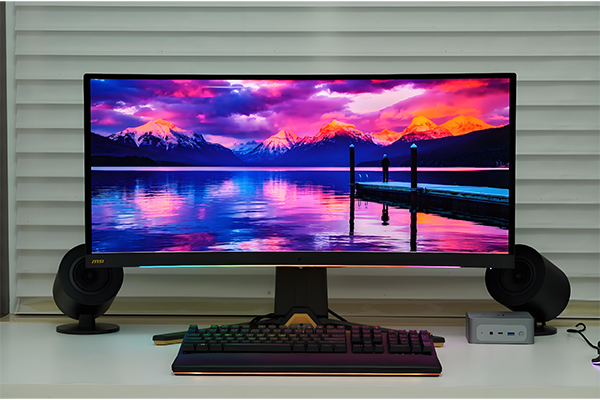
IPS mode showing in-plane rotation of liquid crystals
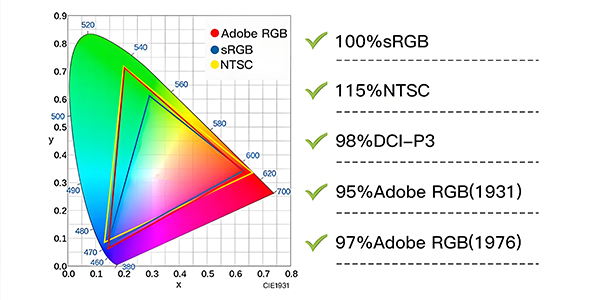
IPS color gamut comparison with other LCD technologies
IPS Display Performance
2.4 VA Mode (Vertical Alignment)
VA mode operation showing vertical alignment characteristics
Contrast Ratio Comparison
VA technology represents a middle ground between TN and IPS technologies, offering superior contrast ratios while maintaining better viewing angles than TN displays. In VA lcd display screen technology, liquid crystal molecules naturally align perpendicular (vertically) to the substrate surfaces when no voltage is applied.
When an electric field is applied, the liquid crystals tilt towards the horizontal plane, allowing light to pass through varying degrees based on the voltage level. This vertical alignment in the off-state creates excellent black levels, as the perpendicular orientation effectively blocks light transmission when no voltage is applied.
There are several variations of VA technology, including MVA (Multi-domain Vertical Alignment) and PVA (Patterned Vertical Alignment). These implementations divide each pixel into multiple sub-domains with slightly different alignment directions, reducing viewing angle dependencies and improving color consistency.
Performance Characteristics:
Strengths
- • Excellent contrast ratios (often 3000:1 or higher)
- • Good black levels and dark scene performance
- • Better viewing angles than TN
- • Balanced performance for most applications
Considerations
- • Slightly slower response times than TN
- • Viewing angles less than IPS
- • Moderate color accuracy
- • Potential for off-angle gamma shifts
VA technology has become particularly popular in mid-to-high-end televisions and monitors, where its excellent contrast ratios enhance the viewing experience for movies and video content. The technology offers a compelling balance between the cost-effectiveness of TN and the viewing angle performance of IPS, making it a versatile choice for many lcd display screen applications.
2.5 Other Mode Introductions
Beyond the primary LCD technologies, several specialized modes have been developed for specific applications, offering unique characteristics tailored to particular use cases. These technologies often represent hybrid approaches or specialized implementations of the fundamental principles found in the main LCD modes.
FSC (Fringe Field Switching)
A variant of IPS technology, FSC uses a fringe electric field generated by a single substrate with both common and pixel electrodes. This design reduces the number of manufacturing steps while maintaining many of IPS's advantages, particularly in terms of viewing angles and color reproduction.
FSC displays are often found in high-end monitors and mobile devices where a balance of performance and manufacturing efficiency is desired. The technology offers excellent image quality for a lcd display screen while potentially reducing production costs compared to traditional IPS.
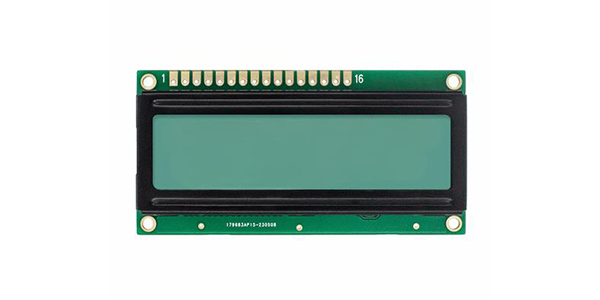
OCB (Optically Compensated Bend)
OCB technology features liquid crystals that bend in an S-shape when no voltage is applied, creating a self-compensating structure that allows for very fast response times. This makes OCB displays particularly suitable for motion-intensive applications like video playback.
While offering exceptional response times, OCB technology has higher power consumption and more complex manufacturing requirements, limiting its widespread adoption in consumer lcd display screen products despite its performance advantages.
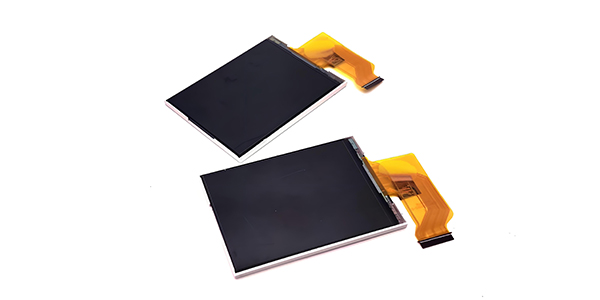
CPA (Continuous Pinwheel Alignment)
CPA technology arranges liquid crystals in a radial pattern from the center of each pixel, creating multiple domains that improve viewing angles and reduce color shift. This approach provides better off-axis performance than traditional TN while maintaining lower production costs than IPS.
AFFS (Advanced Fringe Field Switching)
An enhancement of FSC technology, AFFS improves transmittance and contrast ratio while maintaining wide viewing angles. This makes it particularly suitable for outdoor lcd display screen applications where sunlight readability is important, such as in some tablets and portable devices.
IPS-α (IPS Alpha)
Developed by Sony, IPS-α combines the advantages of IPS with improved contrast ratios by incorporating a unique pixel structure and electrode design. This technology delivers excellent color accuracy and viewing angles while approaching VA levels of contrast performance.
These specialized technologies demonstrate the ongoing innovation in lcd display screen development, each addressing specific performance requirements or manufacturing challenges. While they may not achieve the widespread adoption of the primary LCD modes, they play important roles in specialized applications and often contribute technical advancements that eventually find their way into mainstream display technologies.
Reflective LCDs represent a fundamentally different approach to lcd display screen technology, utilizing ambient light rather than a dedicated backlight as their illumination source. This design offers significant power savings, making reflective displays ideal for battery-powered devices and waterproof outdoor lcd screen where energy efficiency is critical.
In reflective LCDs, light from the environment enters through the front of the display, passes through the liquid crystal layer, and is reflected back to the viewer by a reflective layer positioned behind the liquid crystals. The liquid crystal layer modulates this reflected light to create the image, similar to how transmissive displays modulate backlight.
This reliance on ambient light means that reflective displays perform best in well-lit environments, including direct sunlight, where they can achieve excellent visibility. Conversely, they become difficult to read in low-light conditions without additional illumination.
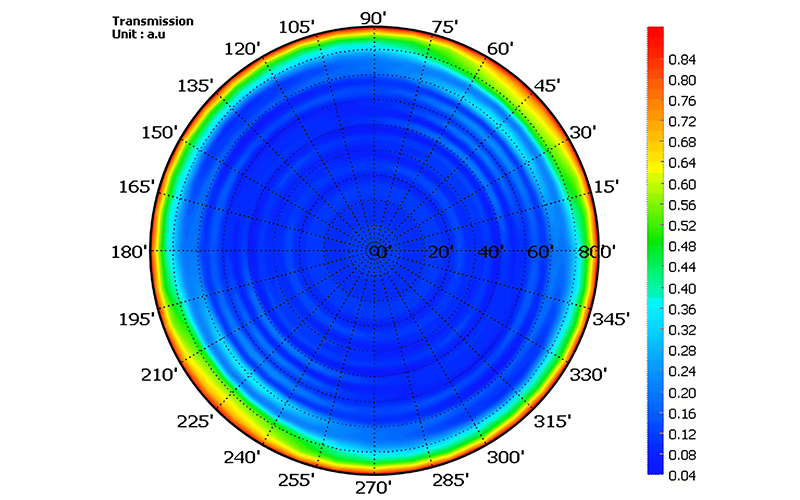
Reflective LCD structure showing ambient light reflection path
Key Characteristics and Advantages
Performance Traits
- Excellent visibility in bright ambient light, including direct sunlight
- Reduced visibility in low-light conditions without auxiliary lighting
- Typically lower contrast ratios compared to transmissive displays
- Response times vary based on underlying liquid crystal technology
Practical Benefits
- Significantly lower power consumption (no backlight)
- Extended battery life for portable devices
- Reduced eye strain in bright conditions due to lower emitted light
- Simpler construction can lead to lower manufacturing costs
Applications of Reflective LCDs
The unique properties of reflective lcd display screen technology make it well-suited for specific applications where ambient light is abundant and power efficiency is paramount:
Calculators
Digital Watches
E-readers (e.g., Amazon Kindle)
Appliance Displays
Bicycle Computers
Medical Devices
Industrial Controls
Outdoor Equipment
E-readers represent one of the most successful applications of reflective lcd display screen technology, with specialized e-ink displays (a type of reflective display) mimicking the appearance of printed paper while offering the advantages of digital content. These devices consume power only when the display is updated, enabling weeks of battery life between charges.
Semi-transmissive, or transflective, LCDs combine features of both transmissive and reflective technologies, offering a versatile solution that performs well in both bright and low-light conditions. This hybrid approach makes them particularly valuable for mobile devices used in varying lighting environments.

Light path comparison between LCD types
Transflective displays incorporate both a backlight and a reflective layer, allowing them to operate in two modes: using transmitted backlight in low ambient light and reflecting ambient light in bright conditions. Some advanced designs can simultaneously use both light sources, blending them for optimal visibility in medium-light environments.
The key to transflective technology is a partially reflective layer that allows some backlight to pass through while reflecting ambient light. This layer is often a specially designed mirror that reflects external light while transmitting light from the backlight when it's activated.
In bright ambient conditions, the backlight can be turned off to save power, with the display functioning as a reflective lcd display screen. In dark environments, the backlight illuminates the display, functioning as a transmissive LCD. In mixed lighting, both illumination sources contribute to the image.
Transflective Operation Modes
- Reflective mode: Backlight off, using ambient light only
- Transmissive mode: Backlight on, using artificial light only
- Mixed mode: Both illumination sources active, blended for optimal visibility
Challenges and Trade-offs
While offering versatility, transflective displays face certain challenges that have limited their widespread adoption compared to purely transmissive technologies. The hybrid design inherently involves compromises in performance:
Limitations
- Reduced contrast compared to dedicated transmissive or reflective designs
- More complex construction increases manufacturing costs
- Potential for color shift between different operating modes
- Lower efficiency than dedicated technologies in their optimal conditions
Advantages
- Versatile performance across varying lighting conditions
- Power efficiency by utilizing ambient light when available
- Continuous visibility from bright sunlight to complete darkness
- Reduced eye strain in bright conditions compared to backlit displays
Applications of Transflective LCDs
Despite their limitations, transflective displays excel in applications where devices are used in both indoor and outdoor environments. Common applications include:
Mobile Phones
Early smartphones and ruggedized mobile devices
GPS Devices
Navigation systems used in vehicles and outdoors
Digital Cameras
Viewfinders and control displays
Smart Watches
Wearable devices used in various lighting
Car Dashboards
Instrument clusters visible in all lighting
Portable Medical Devices
Equipment used in various healthcare settings
While not as common in mainstream consumer electronics as transmissive displays, transflective technology continues to be valued in specialized applications where its unique capabilities provide significant benefits. Advancements in transflective lcd display screen design continue to address its limitations, improving contrast and color consistency across operating modes.
Projective LCD technology, commonly found in LCD projectors, uses liquid crystal displays—including transparent lcd screen—as light modulators to create large-format images by projecting light onto a screen or surface. Unlike direct-view LCDs that create images visible directly on the display surface, projective LCD systems use the lcd display screen as a component within a larger optical system that ultimately projects the image elsewhere.
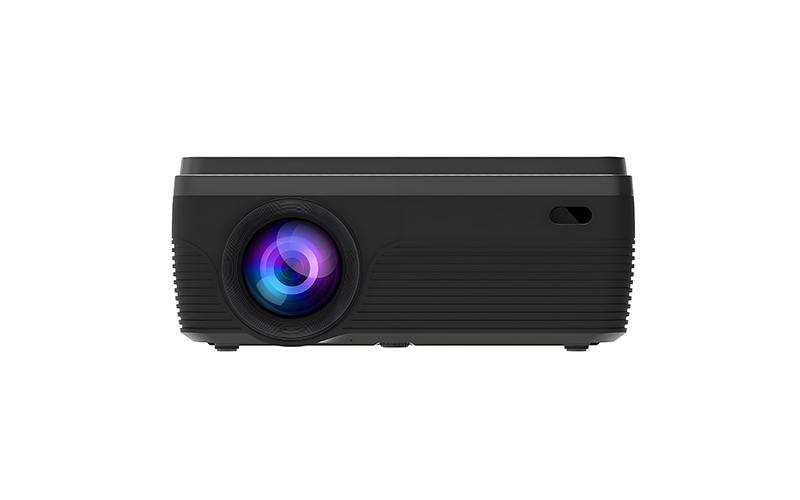
Three-panel LCD projector system with light path
How Projective LCDs Work
Most LCD projectors use a powerful light source (traditionally a metal halide lamp, now increasingly LEDs or lasers) that generates intense white light. This light is separated into the primary colors (red, green, blue) using dichroic filters or prisms.
Each color component is directed to a separate lcd display screen (typically a small, high-resolution panel) that modulates the light based on the image information for that color channel. The modulated light from each panel is then recombined and projected through a lens onto a surface, creating a large-format color image.
Single-panel LCD projectors also exist, using a color wheel to sequentially filter light through different colors while the single LCD panel modulates the image accordingly. These systems are generally more affordable but may suffer from color separation artifacts.
Key Components of LCD Projectors
Light Source
Provides intense illumination, typically:
- High-intensity discharge (HID) lamps
- LED arrays
- Laser diodes
- Hybrid laser-LED systems
LCD Panels
Small, high-resolution panels that modulate light:
- Typically 0.5-1.3 inches in size
- Resolution from SVGA to 4K and beyond
- High contrast ratio designs
- Fast response times to prevent motion blur
Optical System
Directs and processes light through the system:
- Dichroic filters for color separation
- Prisms for light recombination
- Projection lens system
- Light integrators for uniform illumination
Advantages and Limitations of LCD Projectors
Advantages
- Excellent color reproduction and accuracy compared to other projection technologies
- No color wheel required in three-panel designs, eliminating potential rainbow artifacts
- Generally lower cost compared to DLP projectors at equivalent brightness levels
- Good scalability in terms of image size and brightness
- LED-based models offer long lamp life and instant on/off capability
Limitations
- Potential for lower contrast ratios compared to DLP projectors due to light leakage
- Three-panel systems can suffer from color convergence issues if not properly calibrated
- Bulb-based models require periodic lamp replacement, adding maintenance costs
- Can exhibit "screen door effect" where individual pixels are visible in large projections
- Generally bulkier than DLP projectors of comparable brightness
Applications of Projective LCD Technology
LCD projectors find application in numerous settings where large-format displays are required:
Education
Classroom presentations and lectures
Business
Meetings and conference presentations
Home Theater
Cinema-like entertainment experiences
Large Venues
Concert halls and auditoriums
Recent advancements in projective LCD technology have focused on improving contrast ratios, increasing resolution to 4K and beyond, and developing more efficient light sources. LED and laser illumination have significantly extended the lifespan of projective LCD systems while reducing their power consumption and heat output.
As with direct-view technologies, the lcd display screen remains the critical component in these projection systems, continuing to evolve with better light modulation capabilities, faster response times, and higher resolutions to meet the demands of increasingly sophisticated projection applications.
Summary of LCD Technologies
The diverse range of LCD technologies demonstrates the versatility and adaptability of liquid crystal displays, each offering unique advantages tailored to specific applications. From the ubiquitous transmissive displays in our smartphones and televisions to specialized reflective and projective systems, the lcd display screen continues to be a fundamental technology in modern visual interfaces.
TN
Low cost, fast response, limited viewing angles
STN
Improved TN, better contrast, moderate performance
IPS
Excellent viewing angles, superior color accuracy
VA
High contrast, good balance of performance traits
Reflective
Power efficient, sunlight readable, low power
As display technology continues to advance, LCD remains a competitive and evolving platform, with ongoing innovations improving performance, efficiency, and versatility across all its various implementations.